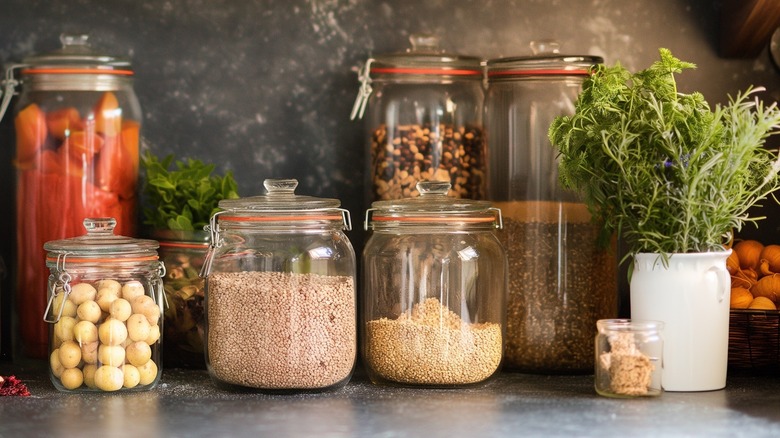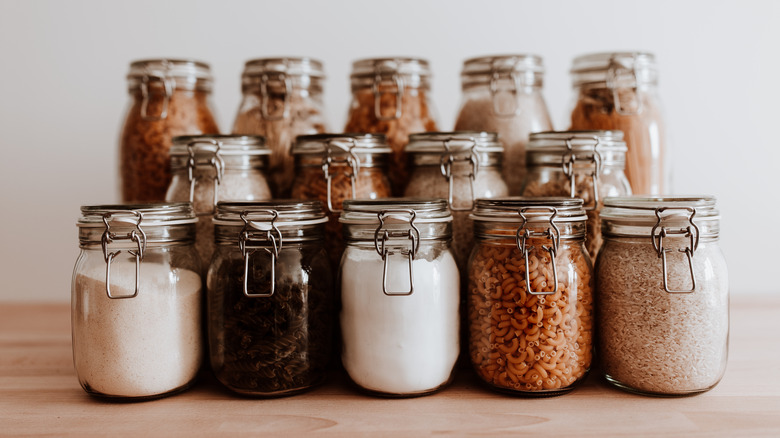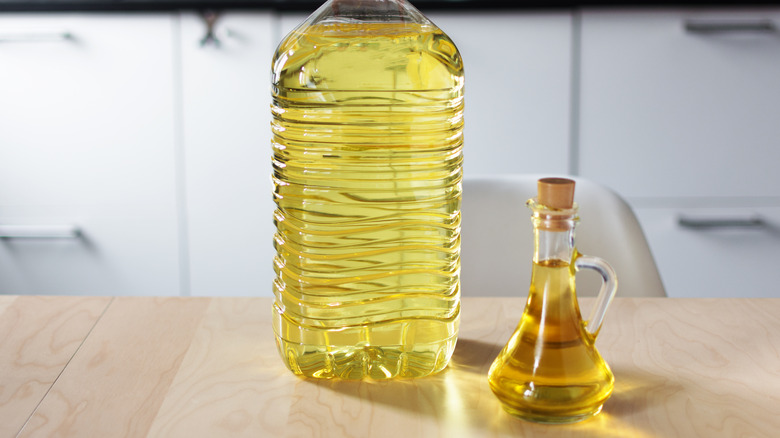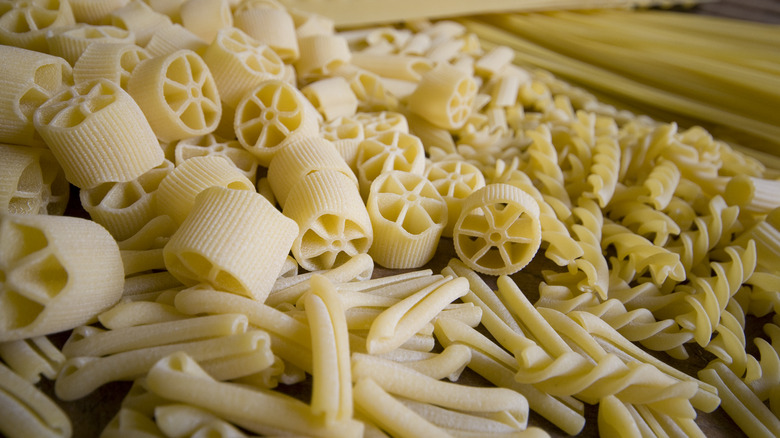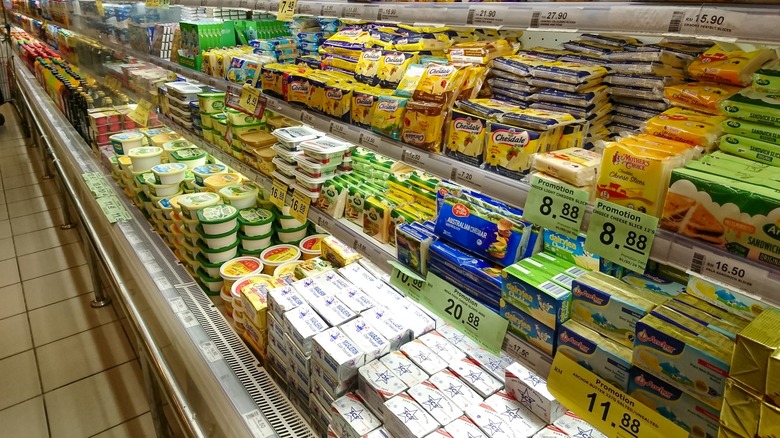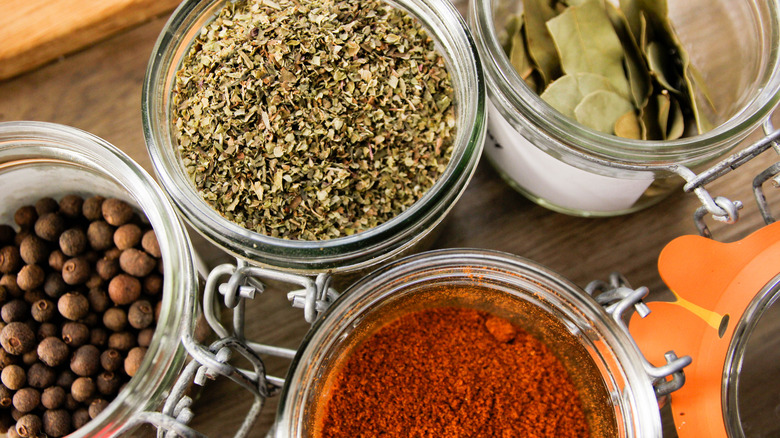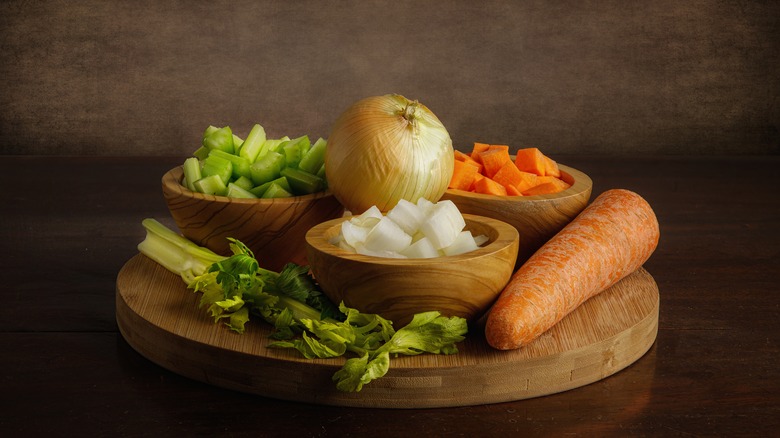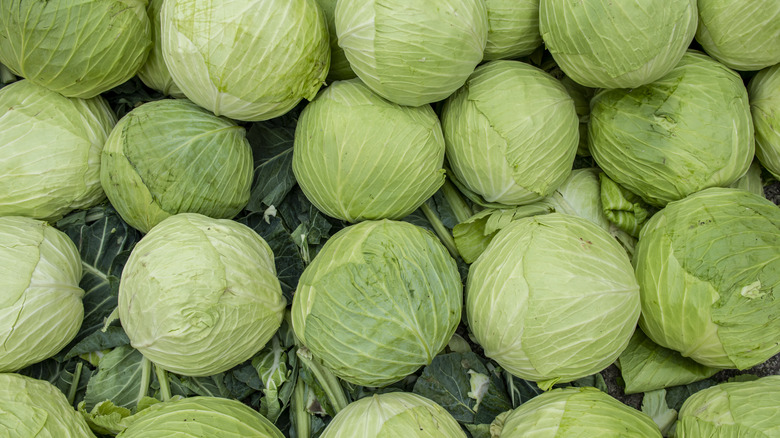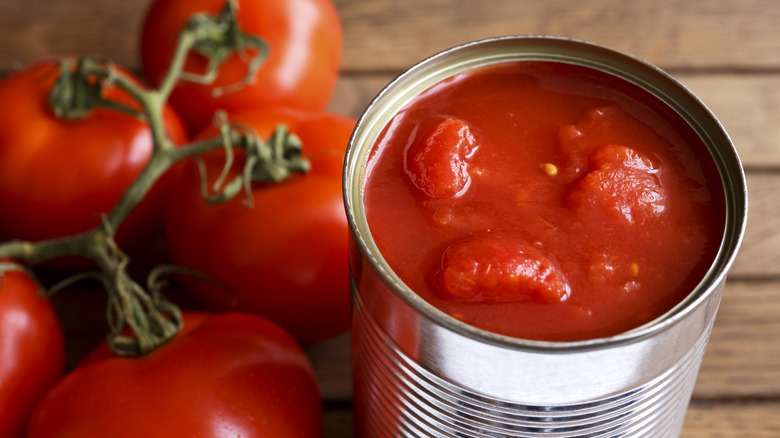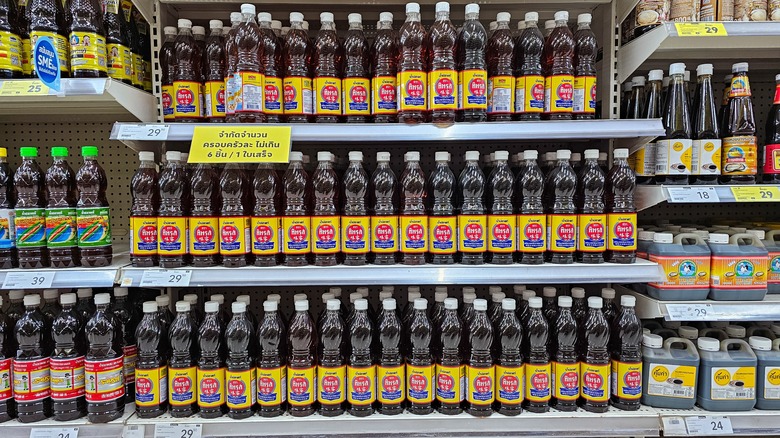9 Pantry Ingredients That Professional Chefs Buy Cheap
Stocking up your pantry on a budget is an art form. Knowing where you can afford to cut costs and which ingredients you can swap in for less can be very helpful when you want to make delicious food without spending a fortune at the grocery store every week. Equally important is figuring out what your personal staple ingredients are, and shopping accordingly. When you know what you go through the most of, you can strategize bulk buys, and have something left over to splurge a little on those other favorite specialty items.
We turned to Katelyn Leckie, chef at The Stop Community Food Centre in Toronto and co-founder of Not Your Parents' Wine, to ask which items we should be buying for cheap. As a chef at The Stop, she prepares meals for families in need and community markets that aim to offer healthy foods at affordable prices. That tends to involve balancing nutritious and delicious with affordable and large batch cooking. She gave us loads of great tips on what to buy, how to buy, and when. Leckie also had some good suggestions to help us get the most out of our ingredients and avoid wasting money or food.
Rice, beans, and lentils
Dried beans will almost always cost less per volume than canned, and they're much easier to buy in bulk. "You get more bang for your buck," says Katelyn Leckie, "and I don't actually soak mine." That's a relief to those of us who worry that cooking dried beans takes a lot more effort. While many recipes advocate soaking dried beans overnight, Leckie confesses she often cuts that step out; "As soon as I start cooking I start boiling in lots and lots of water so the water really gets around each bean and then they'll cook faster." Just make sure to check the expiry date, as the older beans get, the longer they take to cook. "So, if you know you're at a grocery store with a high turnover," explains Leckie, "you're probably fine."
Rice is something she will also buy in larger quantities. "I always get a big bag and we go through it pretty quickly," she says. If you eat a good deal of rice, then there's no need to shell out for artisanal basmati sold in a 300-gram package when you can grab a 10 pound bag of rice that's perfectly good quality from a local Asian market. The same goes for dried lentils.
Flour and cooking oil
If you use an ingredient often, buy it in bulk. This will almost always save you money. But, "freshness is key," Katelyn Leckie clarifies. "It's not going to help if you buy everything in huge quantities and never get through it because you're gonna end up throwing it out anyway. So that doesn't help you economically. But if you bake a fair amount, get the big bag of flour." Go for that 5 to 10 pound bag.
You can check out our ranking of popular flour brands, but Leckie says she'll tend to grab the cheapest name brand option. That's her simplest golden rule when grocery shopping on a budget. "I always get the second cheapest thing. When in doubt, get the second cheapest thing."
Similarly, if you go through a lot of oil in your cooking and baking, you can benefit from buying it in larger 3-liter or gallon size jugs or cans. Leckie keeps one smaller reusable bottle around and pours the oil into that so it's easier to use on a daily basis. Oil can go rancid, but if you're getting through it, these larger bottles will save you lots of money. And keep in mind, not all olive oils are created equal. Some are better than others, but some are also not meant to be cooked with. If you buy a beautiful bottle of olive oil, save that for drizzling on top of dishes and don't waste it in a cooked dish.
Pasta
When it comes to dried pasta, Katelyn Leckie says she follows her "second cheapest option" rule of thumb. She won't go for the no-name brand, but she says, "I try to get the cheapest dry pasta from an Italian brand." That's probably because she tends to buy ingredients from those who know them best. And when you go right to the source, you can often save money without sacrificing quality. A good box of pasta may not be the absolute cheapest option, "But it does go on sale a lot," she tells us, "so like, when I see it on sale I'll get three or four things of pasta just to have in the house."
If you're used to shopping for the moment, consider a little foresight next time you're restocking the pantry. Decent brands of pasta will often go on sale, and when they do, Leckie advises stocking up. If you already have a box at home, you won't need to pay more for it later. Just make sure to follow best practices when storing dried pasta, and it will likely last for years in your cupboard.
Parmesan and butter on sale
Grabbing a good bargain when you can is generally a good tactic, as long as you're buying things that you actually use, and preferably things with a longer shelf life. But while some ingredients don't last that long on the shelf or in the fridge, Katelyn Leckie reminds us that they might keep in the freezer. Can't get through that pint of fresh strawberries that cost a fortune? Freeze the rest for smoothies! What about that bottle of juice? Freeze some in an ice cube tray before the bottle starts to ferment.
Things you can freeze easily can be bought in bulk. Leckie recommends stocking up when you find a good sale. When it comes to cheese, not everything freezes well. Some cheeses and other dairy products can change texture when frozen and thawed. But cheeses with low fat content (hard cheeses like Parmesan) do freeze well. And, funnily enough, so does butter. "I stock up when it's on sale," says Leckie, "and I put it in the freezer. It freezes really well."
These items are staple ingredients, but they are costing more and more these days to the point that they've become down-right unaffordable. So, when you see butter or Parmesan cheese on sale, grab as much as you can and throw the extra in the freezer. When you're ready for more, just pop it in the fridge, and make sure to bring butter to the right temperature for the task at hand.
Herbs and spices
Fresh herbs often go to waste. They're sold in large bunches and your recipe will almost never call for that much. By the time you need some more, it's already gone rotten in the fridge. Katelyn Leckie says, "As soon as you get home, wash them and roll them in paper towel and then put them in a ziplock bag... and that helps them last a little bit longer."
However, she tells us, "Anywhere you can use dried herbs for the dish, again like a chili or something stewed where it's gonna cook a long time, like I think that's more economical because fresh herbs are expensive and often you don't get through them quickly." Dried herbs will cost less and last much longer. And, Leckie reminds us that some fresh herbs, like rosemary and thyme, can easily be dried. Next time you use a sprig of thyme in a recipe and you're not sure you'll use the rest, simply hang the bunch in your kitchen and it will dry out in a few days.
Spices can also be expensive. It's best to snag a larger bag when you can, and then store those spices in a sealable jar. But Leckie cautions, "spices get old and less effective," so you want to buy spices as fresh as possible.
Staple cooking veggies
There are a few primary reasons to buy organic fruits and vegetables. One reason is that you may want to limit exposure to pesticides, and another is that you want to buy the most flavorful ingredients you can find. Katelyn Leckie says she prioritizes taste when it comes to selecting which produce to buy organic. She explains, "if you're cooking Swiss chard, for example, the taste of the chard is the front row center... Where the taste of the vegetable is really front row center I think it's worth going organic."
Organic or locally grown tomatoes tend to have much more flavor. Tomatoes are worth the splurge. Likewise, Leckie tells us, organic bananas are one fruit she won't compromise on, as they tend to be so much more flavorful than non-organic. But some veg that will break down more in the cooking process and become more of a background flavor isn't worth paying the organic markup. Staples that make up your mirepoix or sofrito base don't have to be organic. Onion, celery, and carrots that will be cooked down a lot are veggies you can go cheaper with. You can buy a big bag of onions or carrots for very little, and they'll last a while.
Cabbage and potatoes
There are lots of different kinds of potatoes out there (red, white, yellow, purple, waxy or starchy), and you may want to use one over the other in certain dishes. While Katelyn Leckie will splurge on organic fingerling potatoes for a fresh side dish, she says a russet is a russet when it comes to baking or stewing potatoes. Feel free to grab that cheap 5 or 10 pound bag.
Cabbage is another versatile veg that takes on other flavors really well. This means you can grab the cheaper stuff and it won't really make a huge difference to your dish's ultimate taste profile. Especially if you're cooking it down. "I just get the most run-of-the-mill cabbage I can find in the grocery store," Leckie says. "And it goes so far... get a nice big one and they last. They last in the fridge forever."
If you're not excited by the thought of cabbage, it really is worth experimenting with. Cabbage appears in a wide range of cuisines and recipes, from tangy coleslaw, to stir fry, to corned beef, or even cabbage rolls. It's great raw or cooked, so check out this guide to the many types of cabbage and how to cook with them. A lot of produce has a pretty short shelf life, but these hearty veggies tend to be cheap to buy, versatile to cook with, last a long time, and just generally go a lot further than many others.
Canned whole tomatoes
Canned tomatoes come in many forms (crushed, diced, puréed), but Katelyn Leckie says you only need to keep one kind in stock: whole peeled tomatoes. If your recipe calls for crushed tomatoes or tomato sauce, it's easy to take the canned tomatoes and hand crush or blitz them in a blender or food processor to the desired texture for whatever recipe you're cooking up.
There's a surprising range of prices when it comes to canned tomatoes. A nice imported can of San Marzanos can run you upwards of $5. Leckie explains that when you're using them in a dish where they'll be cooked down and integrated into a larger flavor profile, as in chilis, soups, or stews, you can feel good about opting for the cheaper ones. However, when the tomatoes are going to be the star of the show, as in some pasta sauces, then you may want to spring for a nicer brand. She personally always has two large cans of inexpensive no-name and one or two cans of pricier Italian pomodoros in stock.
Tomato paste is another staple ingredient that often goes largely to waste. Most recipes call for just a few tablespoons; up to ⅔ of a can. If you're tired of chucking that last third in the trash, Leckie recommends opting for the tomato paste that comes in a tube, instead. These metallic tubes are resealable and tend to last longer in the fridge before going hard or moldy.
Fish sauce
Anchovies are often called for in pasta sauces and salad dressings. Katelyn Leckie says they're a great way to add umami flavor to a dish, but when it comes to anchovies, she says, "They're not particularly expensive, but I find if I get a jar of them, I don't get through them fast enough, and so in that way it can be a waste of money." She tells us that unless a recipe absolutely needs to feature these salty little fish, "what I do is I get fish sauce... and I use that in pasta sauces, in Asian cuisine and salad dressings, and it lasts forever because they come in this giant bottle. And you only need a few splashes."
If you've ever made a Thai curry, you may be familiar with fish sauce. But if you're wondering what fish sauce is, it's a salty translucent brown liquid with a pungent smell and powerful fishy flavor that adds a super kick of umami. That flavor is actually derived from anchovies. No wonder it's a good substitute. Fish sauce can also boost the flavor of your fried rice. It has a deep intense flavor and a little goes a long way, but unlike with some other ingredients we use sparingly, fish sauce tends to last forever in the fridge. Add a dash into your marinades, curries, sauces, and dressings, and it will add a real depth of flavor and substitute anchovy for a fraction of the cost.
